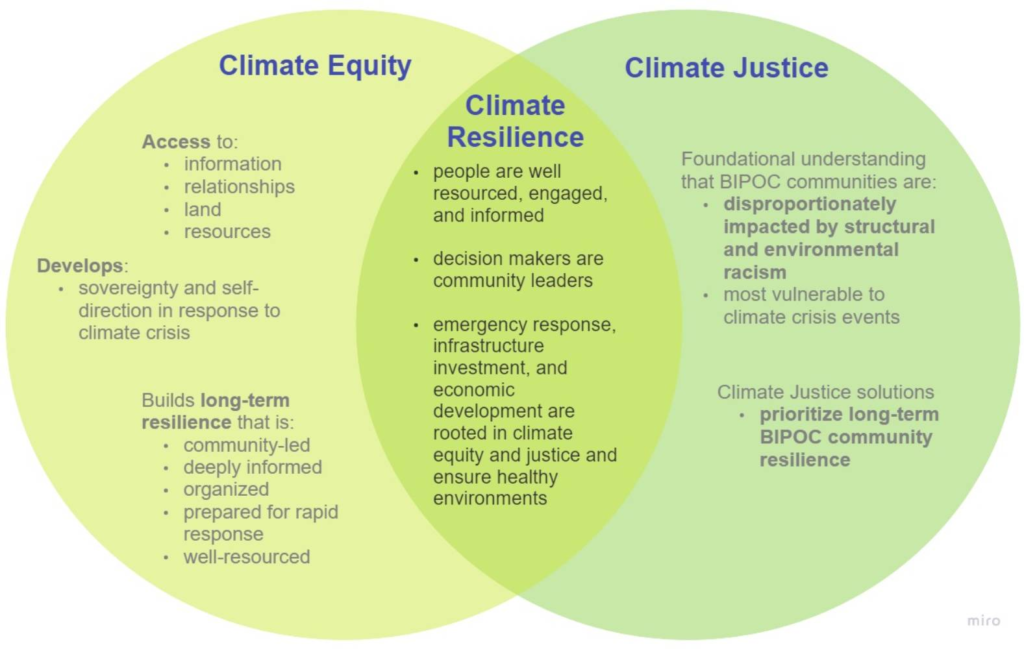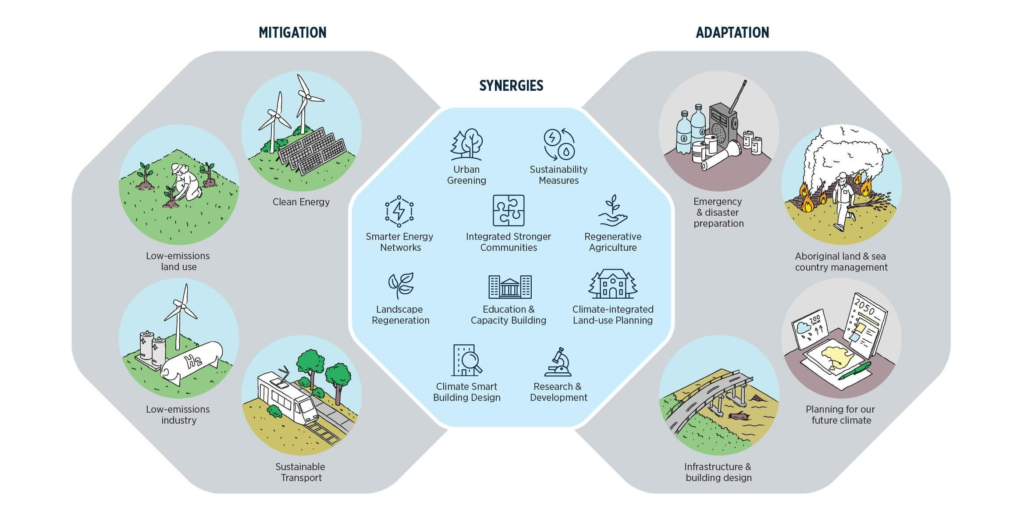Climate resilience and environmental policy are becoming urgent priorities as the United States faces more frequent and severe natural disasters. From wildfires in California to hurricanes in Florida and floods in the Midwest, extreme weather events are testing the limits of community preparedness, insurance systems, and federal support.
As climate change intensifies, the question is no longer whether disasters will strike but how communities can adapt, recover, and prevent future losses. Insurance, local adaptation strategies, and federal leadership are all key components of building climate resilience.
What Climate Resilience Means
Climate resilience is the ability of communities, systems, and individuals to withstand, adapt to, and recover from climate-related shocks. Unlike short-term emergency response, resilience emphasizes long-term preparation and adaptability.
For example, coastal towns may build sea walls or restore wetlands to protect against rising seas, while cities redesign stormwater systems to reduce flooding. Rural areas might invest in drought-resistant crops to ensure food supplies. Beyond infrastructure, resilience also means having strong social and economic systems that help people recover more quickly after disasters.

Environmental Policy and Climate Challenges
Environmental policy guides how resources are used, how risks are managed, and how communities adapt to climate change. Strong policies can encourage renewable energy adoption, set stricter building codes, provide funding for local projects, and stabilize insurance markets. Without coordinated policy, resilience efforts become fragmented, leaving vulnerable populations at higher risk.
Insurance as a Safety Net
Insurance plays a central role in managing financial risks from disasters. By spreading costs across many policyholders, insurance allows recovery after devastating events. But climate change is straining traditional insurance models.
Rising Costs of Coverage
In high-risk areas, premiums are climbing rapidly. Homeowners in wildfire-prone California or flood-prone Louisiana often face dramatic increases. In some regions, insurers are pulling out entirely, leaving residents without affordable coverage.
Federal Insurance Programs
To fill the gaps, the federal government runs programs such as the National Flood Insurance Program (NFIP). However, these programs are under pressure because payouts from repeated disasters exceed incoming premiums. Reform is necessary to keep them sustainable and fair.
Incentives for Resilience
A promising idea is linking insurance rates to risk reduction. Homeowners who install fire-resistant roofs, elevate homes above flood levels, or invest in other protective measures could pay lower premiums. This reduces losses for insurers while encouraging resilience.
Local Adaptation Efforts
Local governments are on the front lines of climate resilience, responsible for protecting infrastructure, homes, and businesses.
Urban Strategies
Cities are experimenting with solutions such as:
- Expanding green spaces to absorb rainfall
- Updating zoning laws to prevent development in high-risk areas
- Investing in resilient power grids and transportation systems
New York City’s storm surge barriers and Miami’s elevated roads are clear examples of adaptation in action.
Rural and Agricultural Adaptation
In rural areas, farmers are adopting drought-resistant crops, using modern irrigation systems, and practicing soil conservation. Regional planning helps manage wildfire risks and prepare for emergencies where resources are limited.
Role of Communities
Adaptation is most effective when communities are directly involved. Policies shaped by local needs and input have a better chance of success. Grassroots organizations often play a vital role in raising awareness and demanding equitable solutions.
Federal Roles in Climate Resilience
While local governments carry much of the responsibility, federal leadership is essential for funding, coordination, and national standards.
Disaster Relief and Recovery
FEMA and other agencies provide relief after disasters, but critics argue that too much focus is on recovery rather than prevention. Investing more federal resources in pre-disaster resilience could save both lives and money.
Infrastructure Investment
Federal funding for infrastructure projects such as bridges, roads, and levees strengthens resilience nationwide. Recent infrastructure legislation included billions for climate adaptation, but future investment will need to grow.
Setting National Standards
National policies, from emissions limits to building codes, establish a baseline of protection. Stronger federal standards ensure consistent levels of resilience across states and regions.
Coordinating Agencies
Climate resilience spans multiple sectors, from agriculture to energy. Better coordination among federal agencies can streamline support and reduce duplication of effort.
Challenges Facing Resilience
Despite progress, several obstacles remain. Low-income households often suffer the most damage from disasters yet have the least access to insurance or adaptation resources. Policy fragmentation across states leads to uneven protections. Political divisions slow the adoption of comprehensive strategies. Finally, both private insurers and federal programs face financial limits as the costs of disasters grow.
Possible Policy Solutions
Experts suggest several approaches to strengthen resilience.
Improving Insurance Systems
- Reform federal programs like NFIP to better reflect actual risks while protecting affordability
- Offer discounts for homeowners and businesses that adopt resilience measures
- Create public-private partnerships to share risk
Supporting Local Governments
- Expand federal grants to help towns implement resilience projects
- Provide planning and technical assistance to smaller communities
- Ensure equity by prioritizing vulnerable populations
Strengthening Federal Action
- Shift disaster funds toward prevention and risk reduction
- Establish national resilience standards in building and land-use codes
- Improve coordination through a dedicated federal resilience office
Community-Based Approaches
- Involve residents in decision-making
- Run education campaigns about risks and solutions
- Fund pilot projects to test innovative adaptation ideas

Why Climate Resilience Matters
Beyond policies and programs, resilience is about people. Families losing homes to floods, farmers struggling with drought, and businesses closing after wildfires are stark reminders of what is at stake. Climate resilience is not just about infrastructure or insurance; it is about protecting lives, livelihoods, and future generations.
Conclusion
Climate resilience and environmental policy are critical to preparing the United States for the growing threat of climate disasters. Insurance systems must adapt to new risks, local governments need resources for adaptation, and the federal government must lead with funding, standards, and coordination.
The challenges are significant, but opportunities exist. By linking insurance incentives to resilience, investing in community-driven projects, and shifting focus to prevention, the nation can build a safer, fairer, and more sustainable future. Resilience is no longer optional; it is essential in the face of a changing climate.
Do Follow USA Glory On Instagram
Read Next – Healthcare Access and Affordability: The Ongoing Challenge






